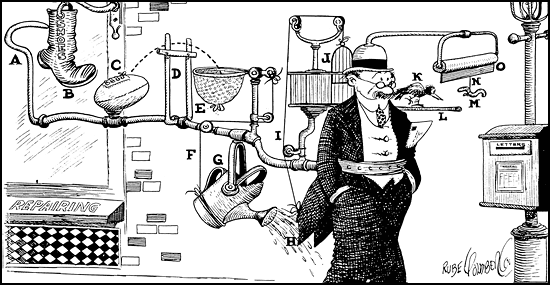What do marketing automation and the boy scouts have in common? One simple adage: Be Prepared.
 Your marketing automation results are only as strong as the work that goes into creating the back-end processes, like lead scoring and workflows. Get the foundational work right, and you're in business. Get it wrong, and well, let's not go there.
Your marketing automation results are only as strong as the work that goes into creating the back-end processes, like lead scoring and workflows. Get the foundational work right, and you're in business. Get it wrong, and well, let's not go there.
Instead, let's talk about how to get it right; namely, how to set up lead scoring and workflows as a prerequisite to an effective automated marketing approach.
Lead Scoring: The Basics
Let's start with lead scoring. The goal here is to set up a structure by which you can identify highly qualified leads based on pre-determined criteria and then assign them a numerical score. When a lead meets or exceeds a certain score, the marketing automation software will automatically trigger a workflow to set off an action, like send an email, or notify a sales rep. Therefore, the first step is establishing a scoring criteria.
HubSpot gives an example of setting up that criteria where Qualified Leads fall within a score range of 10-30. If you're operating within an automated marketing platform like HubSpot, these lead scoring criteria will already be built into the system, like pages visited, content downloaded, demographic information, etc. It will certainly make your life a little easier if all this data is in one place. However, remember that there's no "right" or "wrong" scoring criteria. Criteria will inevitably vary based on the organization. Rather, what's more important is consistency—if you change the criteria down the road, it will throw everything off—and establishing "apples to apples" comparisons between leads.
Creating Lists
After creating lead scoring criteria, you'll also want to consider creating lists. Lists are how you segment and refine contact information to better inform your marketing efforts. For example, you could create a list that includes all leads with a score of 10-30, who are based in California, and have downloaded a white paper from your site. As with lead scoring, this process will be a bit easier within the framework of a marketing automation platform.
Setting Up Workflows
Now that the scoring criteria and lists have been established, your next step is setting up workflows that will trigger automated actions. While this process will vary based on which automation platform you're using, it should nonetheless include the following key steps: First, name the workflow. Also set up a starting condition. For example, the new workflow will automatically enroll leads who join an email list. Next up, you can add a preexisting list to the workflow, if applicable. Depending on your platform, you should also be able to add steps to the workflow, like new emails you want embedded within a lead nurturing campaign.
At the expense of repeating ourselves, the key to successful lead scoring and workflow automation is less about the platform you’re using than it is about the back-end preparation that acts as a foundation for these processes. A consistent and measurable approach to lead scoring and workflows is the best way to generate the greatest value out of your marketing automation efforts.
Have a question about marketing automation? We'd love to help. Feel free to drop us a line at drew@palmeradagency.com




